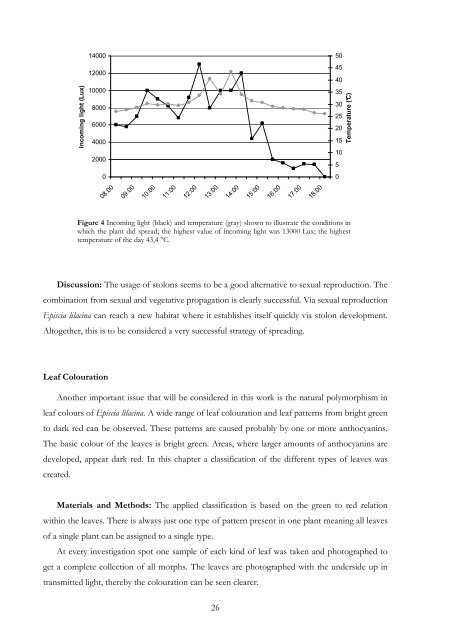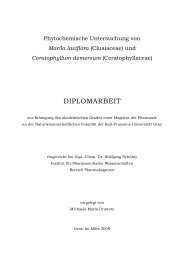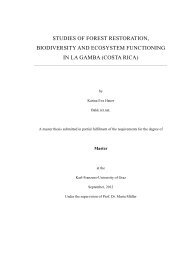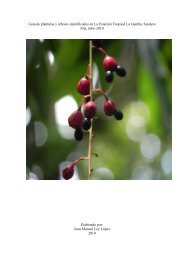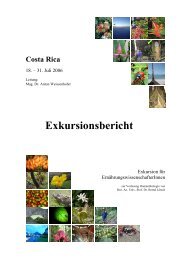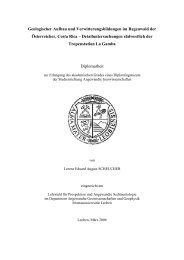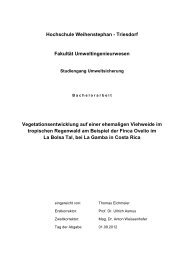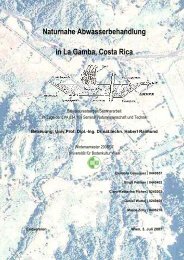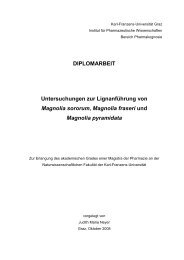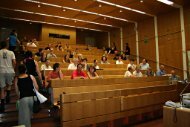Leaf colour patterns, vegetative and sexual reproduction of Episcia ...
Leaf colour patterns, vegetative and sexual reproduction of Episcia ...
Leaf colour patterns, vegetative and sexual reproduction of Episcia ...
You also want an ePaper? Increase the reach of your titles
YUMPU automatically turns print PDFs into web optimized ePapers that Google loves.
14000<br />
50<br />
Incoming light (Lux)<br />
12000<br />
10000<br />
8000<br />
6000<br />
4000<br />
2000<br />
45<br />
40<br />
35<br />
30<br />
25<br />
20<br />
15<br />
10<br />
5<br />
Temperature (°C)<br />
0<br />
0<br />
08:00<br />
09:00<br />
10:00<br />
11:00<br />
12:00<br />
13:00<br />
14:00<br />
15:00<br />
16:00<br />
17:00<br />
18:00<br />
Figure 4 Incoming light (black) <strong>and</strong> temperature (gray) shown to illustrate the conditions in<br />
which the plant did spread; the highest value <strong>of</strong> incoming light was 13000 Lux; the highest<br />
temperature <strong>of</strong> the day 43,4 °C.<br />
Discussion: The usage <strong>of</strong> stolons seems to be a good alternative to <strong>sexual</strong> <strong>reproduction</strong>. The<br />
combination from <strong>sexual</strong> <strong>and</strong> <strong>vegetative</strong> propagation is clearly successful. Via <strong>sexual</strong> <strong>reproduction</strong><br />
<strong>Episcia</strong> lilacina can reach a new habitat where it establishes itself quickly via stolon development.<br />
Altogether, this is to be considered a very successful strategy <strong>of</strong> spreading.<br />
<strong>Leaf</strong> Colouration<br />
Another important issue that will be considered in this work is the natural polymorphism in<br />
leaf <strong>colour</strong>s <strong>of</strong> <strong>Episcia</strong> lilacina. A wide range <strong>of</strong> leaf <strong>colour</strong>ation <strong>and</strong> leaf <strong>patterns</strong> from bright green<br />
to dark red can be observed. These <strong>patterns</strong> are caused probably by one or more anthocyanins.<br />
The basic <strong>colour</strong> <strong>of</strong> the leaves is bright green. Areas, where larger amounts <strong>of</strong> anthocyanins are<br />
developed, appear dark red. In this chapter a classification <strong>of</strong> the different types <strong>of</strong> leaves was<br />
created.<br />
Materials <strong>and</strong> Methods: The applied classification is based on the green to red relation<br />
within the leaves. There is always just one type <strong>of</strong> pattern present in one plant meaning all leaves<br />
<strong>of</strong> a single plant can be assigned to a single type.<br />
At every investigation spot one sample <strong>of</strong> each kind <strong>of</strong> leaf was taken <strong>and</strong> photographed to<br />
get a complete collection <strong>of</strong> all morphs. The leaves are photographed with the underside up in<br />
transmitted light, thereby the <strong>colour</strong>ation can be seen clearer.<br />
26


